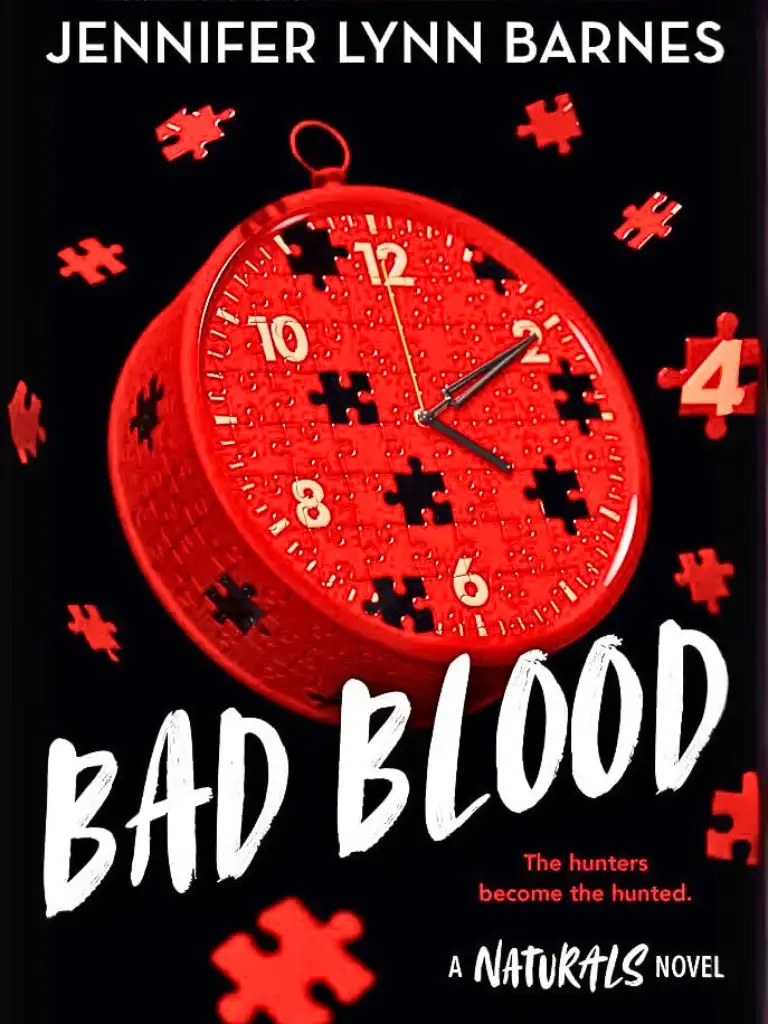TRAPPED IN RELATIONSHIPS: THE COST OF ABUSE AND NEGLECT
The “night sea journey” is the journey into the parts of ourselves that are split off, disavowed, unknown, unwanted, cast out, and exiled to the various subterranean worlds of consciousness. The goal of this journey is to reunite us with
ourselves. Such a homecoming can be surprisingly painful, even brutal. In order to undertake it, we must first agree to exile nothing.
—Stephen Cope
Marilyn was a tall, athletic-looking woman in her midthirties who worked as an operating-room nurse in a nearby town. She told me
that a few months earlier she’d started to play tennis at her sports club with a Boston fireman named Michael. She usually steered clear of men, she said, but she had gradually become comfortable enough with Michael to accept his invitations to go out for pizza after their matches. They’d talk about tennis, movies, their nephews and nieces—nothing too personal. Michael clearly enjoyed her company, but she told herself he didn’t really know her.
One Saturday evening in August, after tennis and pizza, she invited him to stay over at her apartment. She described feeling “uptight and unreal” as soon as they were alone together. She remembered asking him to go slow but had very little sense of what had happened after that.
After a few glasses of wine and a rerun of Law & Order, they apparently fell asleep together on top of her bed. At around two in the morning,
Michael turned over in his sleep. When Marilyn felt his body touch hers, she exploded—pounding him with her fists, scratching and biting, screaming, “You bastard, you bastard!” Michael, startled awake, grabbed his belongings and fled. After he left, Marilyn sat on her bed for hours, stunned by what had happened. She felt deeply humiliated and hated herself for what she had done, and now she’d come to me for help in dealing with her terror of men and her inexplicable rage attacks.
My work with veterans had prepared me to listen to painful stories like Marilyn’s without trying to jump in immediately to fix the problem. Therapy often starts with some inexplicable behavior: attacking a boyfriend in the middle of the night, feeling terrified when somebody looks you in the eye, finding yourself covered with blood after cutting yourself with a piece of glass, or deliberately vomiting up every meal. It takes time and patience to allow the reality behind such symptoms to reveal itself.
TERROR AND NUMBNESS
As we talked, Marilyn told me that Michael was the first man she’d taken home in more than five years, but this was not the first time she’d lost control when a man spent the night with her. She repeated that she always felt uptight and spaced out when she was alone with a man, and there had been other times when she’d “come to” in her apartment, cowering in a corner, unable to remember clearly what had happened.
Marilyn also said she felt as if she was just “going through the motions” of having a life. Except for when she was at the club playing tennis or at work in the operating room, she usually felt numb. A few years earlier she’d found that she could relieve her numbness by scratching herself with a razor blade, but she had become frightened when she found that she was cutting herself more and more deeply, and more and more often, to get relief. She had tried alcohol, too, but that reminded her of her dad and his out-of-control drinking, which made her feel disgusted with herself. So, instead, she played tennis fanatically, whenever she could. That made her feel alive.
When I asked her about her past, Marilyn said she guessed that she “must have had” a happy childhood, but she could remember very little from before age twelve. She told me she’d been a timid adolescent, until she had a violent confrontation with her alcoholic father when she was
sixteen and ran away from home. She worked her way through community college and went on to get a degree in nursing without any help from her parents. She felt ashamed that during this time she’d slept around, which she described as “looking for love in all the wrong places.”
As I often did with new patients, I asked her to draw a family portrait, and when I saw her drawing (reproduced above), I decided to go slowly. Clearly Marilyn was harboring some terrible memories, but she could not allow herself to recognize what her own picture revealed. She had drawn a wild and terrified child, trapped in some kind of cage and threatened not only by three nightmarish figures—one with no eyes—but also by a huge erect penis protruding into her space. And yet this woman said she “must have had” a happy childhood.
As the poet W. H. Auden wrote:
Truth, like love and sleep, resents Approaches that are too intense.
I call this Auden’s rule, and in keeping with it I deliberately did not push Marilyn to tell me what she remembered. In fact, I’ve learned that it’s not important for me to know every detail of a patient’s trauma. What
is critical is that the patients themselves learn to tolerate feeling what they feel and knowing what they know. This may take weeks or even years. I decided to start Marilyn’s treatment by inviting her to join an established therapy group where she could find support and acceptance before facing the engine of her distrust, shame, and rage.
As I expected, Marilyn arrived at the first group meeting looking terrified, much like the girl in her family portrait; she was withdrawn and did not reach out to anybody. I’d chosen this group for her because its members had always been helpful and accepting of new members who were too scared to talk. They knew from their own experience that unlocking secrets is a gradual process. But this time they surprised me, asking so many intrusive questions about Marilyn’s love life that I recalled her drawing of the little girl under assault. It was almost as though Marilyn had unwittingly enlisted the group to repeat her traumatic past. I intervened to help her set some boundaries about what she’d talk about, and she began to settle in.
Three months later Marilyn told the group that she had stumbled and fallen a few times on the sidewalk between the subway and my office.
She worried that her eyesight was beginning to fail: She’d also been missing a lot of tennis balls recently. I thought again about her drawing and the wild child with the huge, terrified eyes. Was this some sort of “conversion reaction,” in which patients express their conflicts by losing function in some part of their body? Many soldiers in both world wars had suffered paralysis that couldn’t be traced to physical injuries, and I had seen cases of “hysterical blindness” in Mexico and India
Still, as a physician, I wasn’t about to conclude without further assessment that this was “all in her head.” I referred her to colleagues at the Massachusetts Eye and Ear Infirmary and asked them to do a very thorough workup. Several weeks later the tests came back. Marilyn had lupus erythematosus of her retina, an autoimmune disease that was eroding her vision, and she would need immediate treatment. I was appalled: Marilyn was the third person that year whom I’d suspected of having an incest history and who was then diagnosed with an autoimmune disease—a disease in which the body starts attacking itself.
After making sure that Marilyn was getting the proper medical care, I consulted with two of my colleagues at Massachusetts General, psychiatrist Scott Wilson and Richard Kradin, who ran the immunology laboratory there. I told them Marilyn’s story, showed them the picture
she’d drawn, and asked them to collaborate on a study. They generously volunteered their time and the considerable expense of a full immunology workup. We recruited twelve women with incest histories who were not taking any medications, plus twelve women who had never been traumatized and who also did not take meds—a surprisingly difficult control group to find. (Marilyn was not in the study; we generally do not ask our clinical patients to be part of our research efforts.)
When the study was completed and the data analyzed, Rich reported that the group of incest survivors had abnormalities in their CD45 RA-to-RO ratio, compared with their nontraumatized peers. CD45 cells are the “memory cells” of the immune system. Some of them, called RA cells, have been activated by past exposure to toxins; they quickly respond to environmental threats they have encountered before. The RO cells, in contrast, are kept in reserve for new challenges; they are turned on to deal with threats the body has not met previously. The RA-to-RO ratio is the balance between cells that recognize known toxins and cells that wait for new information to activate. In patients with histories of incest, the proportion of RA cells that are ready to pounce is larger than normal. This makes the immune system oversensitive to threat, so that it is prone to mount a defense when none is needed, even when this means attacking the body’s own cells.
Our study showed that, on a deep level, the bodies of incest victims have trouble distinguishing between danger and safety. This means that the imprint of past trauma does not consist only of distorted perceptions of information coming from the outside; the organism itself also has a problem knowing how to feel safe. The past is impressed not only on their minds, and in misinterpretations of innocuous events (as when Marilyn attacked Michael because he accidentally touched her in her sleep), but also on the very core of their beings: in the safety of their bodies.
A TORN MAP OF THE WORLD
How do people learn what is safe and what is not safe, what is inside and what is outside, what should be resisted and what can safely be taken in? The best way we can understand the impact of child abuse and neglect is to listen to what people like Marilyn can teach us. One of the things that
became clear as I came to know her better was that she had her own unique view of how the world functions.
As children, we start off at the center of our own universe, where we interpret everything that happens from an egocentric vantage point. If our parents or grandparents keep telling us we’re the cutest, most delicious thing in the world, we don’t question their judgment—we must be exactly that. And deep down, no matter what else we learn about ourselves, we will carry that sense with us: that we are basically adorable. As a result, if we later hook up with somebody who treats us badly, we will be outraged. It won’t feel right: It’s not familiar; it’s not like home. But if we are abused or ignored in childhood, or grow up in a family where sexuality is treated with disgust, our inner map contains a different message. Our sense of our self is marked by contempt and humiliation, and we are more likely to think “he (or she) has my number” and fail to protest if we are mistreated.
Marilyn’s past shaped her view of every relationship. She was convinced that men didn’t give a damn about other people’s feelings and that they got away with whatever they wanted. Women couldn’t be trusted either. They were too weak to stand up for themselves, and they’d sell their bodies to get men to take care of them. If you were in trouble, they wouldn’t lift a finger to help you. This worldview manifested itself in the way Marilyn approached her colleagues at work: She was suspicious of the motives of anyone who was kind to her and called them on the slightest deviation from the nursing regulations. As for herself: She was a bad seed, a fundamentally toxic person who made bad things happen to those around her.
When I first encountered patients like Marilyn, I used to challenge their thinking and try to help them see the world in a more positive, flexible way. One day a woman named Kathy set me straight. A group member had arrived late to a session because her car had broken down, and Kathy immediately blamed herself: “I saw how rickety your car was last week; I knew I should have offered you a ride.” Her self-criticism escalated to the point that, only a few minutes later, she was taking responsibility for her sexual abuse: “I brought it on myself: I was seven years old and I loved my daddy. I wanted him to love me, and I did what he wanted me to do. It was my own fault.” When I intervened to reassure her, saying, “Come on, you were just a little girl—it was your father’s responsibility to maintain the boundaries,” Kathy turned toward me.
“You know, Bessel,” she said, “I know how important it is for you to be a good therapist, so when you make stupid comments like that, I usually thank you profusely. After all, I am an incest survivor—I was trained to take care of the needs of grown-up, insecure men. But after two years I trust you enough to tell you that those comments make me feel terrible.
Yes, it’s true; I instinctively blame myself for everything bad that happens to the people around me. I know that isn’t rational, and I feel really dumb for feeling this way, but I do. When you try to talk me into being more reasonable I only feel even more lonely and isolated—and it confirms the feeling that nobody in the whole world will ever understand what it feels like to be me.”
I genuinely thanked her for her feedback, and I’ve tried ever since not to tell my patients that they should not feel the way they do. Kathy taught me that my responsibility goes much deeper: I have to help them reconstruct their inner map of the world.
As I discussed in the previous chapter, attachment researchers have shown that our earliest caregivers don’t only feed us, dress us, and comfort us when we are upset; they shape the way our rapidly growing brain perceives reality. Our interactions with our caregivers convey what is safe and what is dangerous: whom we can count on and who will let us down; what we need to do to get our needs met. This information is embodied in the warp and woof of our brain circuitry and forms the template of how we think of ourselves and the world around us. These inner maps are remarkably stable across time.
This doesn’t mean, however, that our maps can’t be modified by experience. A deep love relationship, particularly during adolescence, when the brain once again goes through a period of exponential change, truly can transform us. So can the birth of a child, as our babies often teach us how to love. Adults who were abused or neglected as children can still learn the beauty of intimacy and mutual trust or have a deep spiritual experience that opens them to a larger universe. In contrast, previously uncontaminated childhood maps can become so distorted by an adult rape or assault that all roads are rerouted into terror or despair. These responses are not reasonable and therefore cannot be changed simply by reframing irrational beliefs. Our maps of the world are encoded in the emotional brain, and changing them means having to reorganize that part of the central nervous system, the subject of the treatment section of this book.
Nonetheless, learning to recognize irrational thoughts and behavior can be a useful first step. People like Marilyn often discover that their assumptions are not the same as those of their friends. If they are lucky, their friends and colleagues will tell them in words, rather than in actions, that their distrust and self-hatred makes collaboration difficult. But that rarely happens, and Marilyn’s experience was typical: After she assaulted Michael, he had absolutely no interest in working things out, and she lost both his friendship and her favorite tennis partner. It is at this point that smart and courageous people like Marilyn, who maintain their curiosity and determination in the face of repeated defeats, start looking for help.
Generally the rational brain can override the emotional brain, as long as our fears don’t hijack us. (For example, your fear at being flagged down by the police can turn instantly to gratitude when the cop warns you that there’s an accident ahead.) But the moment we feel trapped, enraged, or rejected, we are vulnerable to activating old maps and to follow their directions. Change begins when we learn to “own” our emotional brains. That means learning to observe and tolerate the heartbreaking and gut-wrenching sensations that register misery and humiliation. Only after learning to bear what is going on inside can we start to befriend, rather than obliterate, the emotions that keep our maps fixed and immutable.
LEARNING TO REMEMBER
About a year into Marilyn’s group, another member, Mary, asked permission to talk about what had happened to her when she was thirteen years old. Mary worked as a prison guard, and she was involved in a sadomasochistic relationship with another woman. She wanted the group to know her background in the hope that they would become more tolerant of her extreme reactions, such as her tendency to shut down or blow up in response to the slightest provocation.
Struggling to get the words out, Mary told us that one evening, when she was thirteen years old, she was raped by her older brother and a gang of his friends. The rape resulted in pregnancy, and her mother gave her an abortion at home, on the kitchen table. The group sensitively tuned in to what Mary was sharing and comforted her through her sobbing. I was profoundly moved by their empathy—they were consoling Mary in a
way that they must have wished somebody had comforted them when they first confronted their traumas.
When time ran out, Marilyn asked if she could take a few more minutes to talk about what she had experienced during the session. The group agreed, and she told us: “Hearing that story, I wonder if I may have been sexually abused myself.” My mouth must have dropped open. Based on her family drawing, I had always assumed that she was aware, at least on some level, that this was the case. She had reacted like an incest victim in her response to Michael, and she chronically behaved as if the world were a terrifying place.
Yet even though she’d drawn a girl who was being sexually molested, she—or at least her cognitive, verbal self—had no idea what had actually happened to her. Her immune system, her muscles, and her fear system all had kept the score, but her conscious mind lacked a story that could communicate the experience. She reenacted her trauma in her life, but she had no narrative to refer to. As we will see in chapter 12, traumatic memory differs in complex ways from normal recall, and it involves many layers of mind and brain.
Triggered by Mary’s story, and spurred on by the nightmares that followed, Marilyn began individual therapy with me in which she started to deal with her past. At first she experienced waves of intense, free-floating terror. She tried stopping for several weeks, but when she found she could no longer sleep and had to take time off from work, she continued our sessions. As she told me later: “My only criterion for whether a situation is harmful is feeling, ‘This is going to kill me if I don’t get out.’”
I began to teach Marilyn calming techniques, such as focusing on breathing deeply—in and out, in and out, at six breaths a minute—while following the sensations of the breath in her body. This was combined with tapping acupressure points, which helped her not to become overwhelmed. We also worked on mindfulness: Learning to keep her mind alive while allowing her body to feel the feelings that she had come to dread slowly enabled Marilyn to stand back and observe her experience, rather than being immediately hijacked by her feelings. She had tried to dampen or abolish those feelings with alcohol and exercise, but now she began to feel safe enough to begin to remember what had happened to her as a girl. As she gained ownership over her physical sensations, she also began to be able to tell the difference between past
and present: Now if she felt someone’s leg brush against her in the night, she might be able to recognize it as Michael’s leg, the leg of the handsome tennis partner she’d invited to her apartment. That leg did not belong to anyone else, and its touch didn’t mean someone was trying to molest her. Being still enabled her to know—fully, physically know— that she was a thirty-four-year-old woman and not a little girl.
When Marilyn finally began to access her memories, they emerged as flashbacks of the wallpaper in her childhood bedroom. She realized that this was what she had focused on when her father raped her when she was eight years old. His molestation had scared her beyond her capacity to endure, so she had needed to push it out of her memory bank. After all, she had to keep living with this man, her father, who had assaulted her. Marilyn remembered having turned to her mother for protection, but when she ran to her and tried to hide herself by burying her face in her mother’s skirt, she was met with only a limp embrace. At times her mother remained silent; at others she cried or angrily scolded Marilyn for “making Daddy so angry.” The terrified child found no one to protect her, to offer strength or shelter.
As Roland Summit wrote in his classic study The Child Sexual Abuse Accommodation Syndrome: “Initiation, intimidation, stigmatization, isolation, helplessness and self-blame depend on a terrifying reality of child sexual abuse. Any attempts by the child to divulge the secret will be countered by an adult conspiracy of silence and disbelief. ‘Don’t worry about things like that; that could never happen in our family.’ ‘How could you ever think of such a terrible thing?’ ‘Don’t let me ever hear you say anything like that again!’ The average child never asks and never tells.”
After forty years of doing this work I still regularly hear myself
saying, “That’s unbelievable,” when patients tell me about their childhoods. They often are as incredulous as I am—how could parents inflict such torture and terror on their own child? Part of them continues to insist that they must have made the experience up or that they are exaggerating. All of them are ashamed about what happened to them, and they blame themselves—on some level they firmly believe that these terrible things were done to them because they are terrible people.
Marilyn now began to explore how the powerless child had learned to shut down and comply with whatever was asked of her. She had done so by making herself disappear: The moment she heard her father’s
footsteps in the corridor outside her bedroom, she would “put her head in the clouds.” Another patient of mine who had a similar experience made a drawing that depicts how that process works. When her father started to touch her, she made herself disappear; she floated up to the ceiling, looking down on some other little girl in the bed. She was glad that it was not really her—it was some other girl who was being molested.
Looking at these heads separated from their bodies by an impenetrable fog really opened my eyes to the experience of dissociation, which is so common among incest victims. Marilyn herself later realized that, as an adult, she had continued to float up to the ceiling when she found herself in a sexual situation. In the period when she’d been more sexually active, a partner would occasionally tell her how amazing she’d been in bed—that he’d barely recognized her, that she’d even talked differently. Usually she did not remember what had happened, but at other times she’d become angry and aggressive. She had no sense of who she really was sexually, so she gradually withdrew from dating altogether—until Michael.
HATING YOUR HOME
Children have no choice who their parents are, nor can they understand that parents may simply be too depressed, enraged, or spaced out to be there for them or that their parents’ behavior may have little to do with them. Children have no choice but to organize themselves to survive within the families they have. Unlike adults, they have no other authorities to turn to for help—their parents are the authorities. They cannot rent an apartment or move in with someone else: Their very survival hinges on their caregivers.
Children sense—even if it they are not explicitly threatened—that if they talked about their beatings or molestation to teachers they would be punished. Instead, they focus their energy on not thinking about what has happened and not feeling the residues of terror and panic in their bodies. Because they cannot tolerate knowing what they have experienced, they also cannot understand that their anger, terror, or collapse has anything to do with that experience. They don’t talk; they act and deal with their feelings by being enraged, shut down, compliant, or defiant.
Children are also programmed to be fundamentally loyal to their caretakers, even if they are abused by them. Terror increases the need for attachment, even if the source of comfort is also the source of terror. I have never met a child below the age of ten who was tortured at home (and who had broken bones and burned skin to show for it) who, if given the option, would not have chosen to stay with his or her family rather than being placed in a foster home. Of course, clinging to one’s abuser is not exclusive to childhood. Hostages have put up bail for their captors, expressed a wish to marry them, or had sexual relations with them; victims of domestic violence often cover up for their abusers. Judges often tell me how humiliated they feel when they try to protect victims of domestic violence by issuing restraining orders, only to find out that many of them secretly allow their partners to return.
It took Marilyn a long time before she was ready to talk about her abuse: She was not ready to violate her loyalty to her family—deep inside she felt that she still needed them to protect her against her fears. The price of this loyalty is unbearable feelings of loneliness, despair, and the inevitable rage of helplessness. Rage that has nowhere to go is redirected against the self, in the form of depression, self-hatred, and self-destructive actions. One of my patients told me, “It is like hating your home, your kitchen and pots and pans, your bed, your chairs, your table, your rugs.” Nothing feels safe—least of all your own body.
Learning to trust is a major challenge. One of my other patients, a schoolteacher whose grandfather raped her repeatedly before she was six, sent me the following e-mail: “I started mulling the danger of opening up with you in traffic on the way home after our therapy appointment, and then, as I merged into Route 124, I realized that I had broken the rule of not getting attached, to you and to my students.”
During our next meeting she told me she had also been raped by her lab instructor in college. I asked her whether she had sought help and made a complaint against him. “I couldn’t make myself cross the road to the clinic,” she replied. “I was desperate for help, but as I stood there, I felt very deeply that I would only be hurt even more. And that might well have been true. Of course, I had to hide what had happened from my parents—and from everyone else.”
After I told her that I was concerned about what was going on with her, she wrote me another e-mail: “I’m trying to remind myself that I didn’t do anything to deserve such treatment. I don’t think I have ever had anyone look at me like that and say they were worried about me, and I am holding on to it like a treasure: the idea that I am worth being worried about by someone I respect and who does understand how deeply I am struggling now.”
In order to know who we are—to have an identity—we must know (or at least feel that we know) what is and what was “real.” We must observe what we see around us and label it correctly; we must also be able trust our memories and be able to tell them apart from our imagination. Losing the ability to make these distinctions is one sign of what psychoanalyst William Niederland called “soul murder.” Erasing awareness and cultivating denial are often essential to survival, but the price is that you lose track of who you are, of what you are feeling, and of what and whom you can trust
REPLAYING THE TRAUMA
One memory of Marilyn’s childhood trauma came to her in a dream in which she felt as if she were being choked and was unable to breathe. A white tea towel was wrapped around her hands, and then she was lifted up with the towel around her neck, so that she could not touch the ground with her feet. She woke in a panic, thinking that she was surely going to die. Her dream reminded me of the nightmares war veterans had
reported to me: seeing the precise, unadulterated images of faces and body parts they had encountered in battle. These dreams were so terrifying that they tried to not fall asleep at night; only daytime napping, which was not associated with nocturnal ambushes, felt halfway safe.
During this stage of therapy Marilyn was repeatedly flooded with images and sensations related to the choking dream. She remembered sitting in the kitchen as a four-year-old with swollen eyes, a sore neck, and a bloody nose, while her father and brother laughed at her and called her a stupid, stupid girl. One day Marilyn reported, “As I was brushing my teeth last evening, I was overcome with feelings of thrashing around. I was like a fish out of water, violently turning my body as I fought against the lack of air. I sobbed and choked as I brushed my teeth. Panic was rising up out of my chest with the feeling of thrashing. I had to use every bit of strength I had not to scream, ‘NONONONONONO,’ as I stood over the sink.” She went to bed and fell asleep but woke up like clockwork every two hours during the rest of the night.
Trauma is not stored as a narrative with an orderly beginning, middle, and end. As I’ll discuss in detail in chapters 11 and 12, memories initially return as they did for Marilyn: as flashbacks that contain fragments of the experience, isolated images, sounds, and body sensations that initially have no context other than fear and panic. When Marilyn was a child, she had no way of giving voice to the unspeakable, and it would have made no difference anyway—nobody was listening.
Like so many survivors of childhood abuse, Marilyn exemplified the power of the life force, the will to live and to own one’s life, the energy that counteracts the annihilation of trauma. I gradually came to realize that the only thing that makes it possible to do the work of healing trauma is awe at the dedication to survival that enabled my patients to endure their abuse and then to endure the dark nights of the soul that inevitably occur on the road to recovery.








